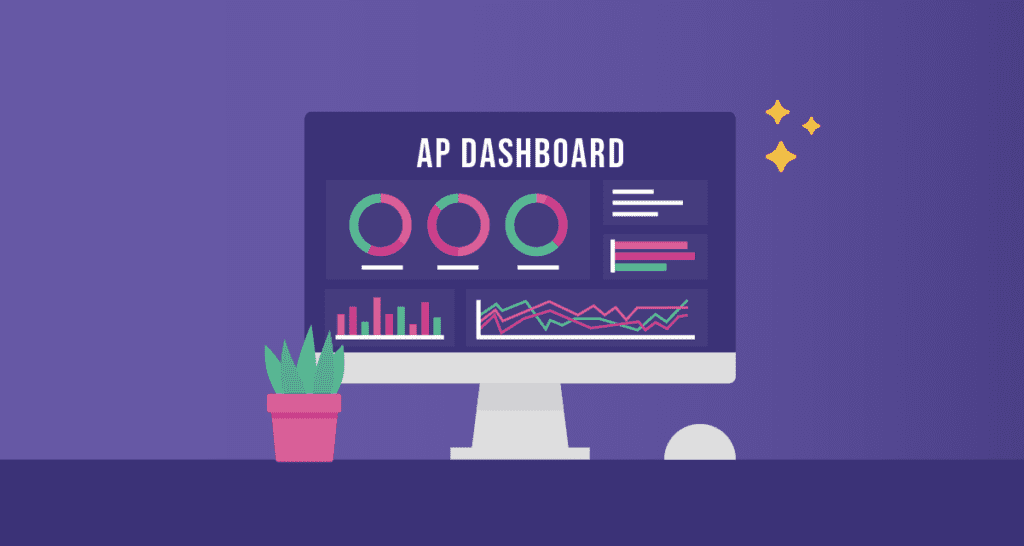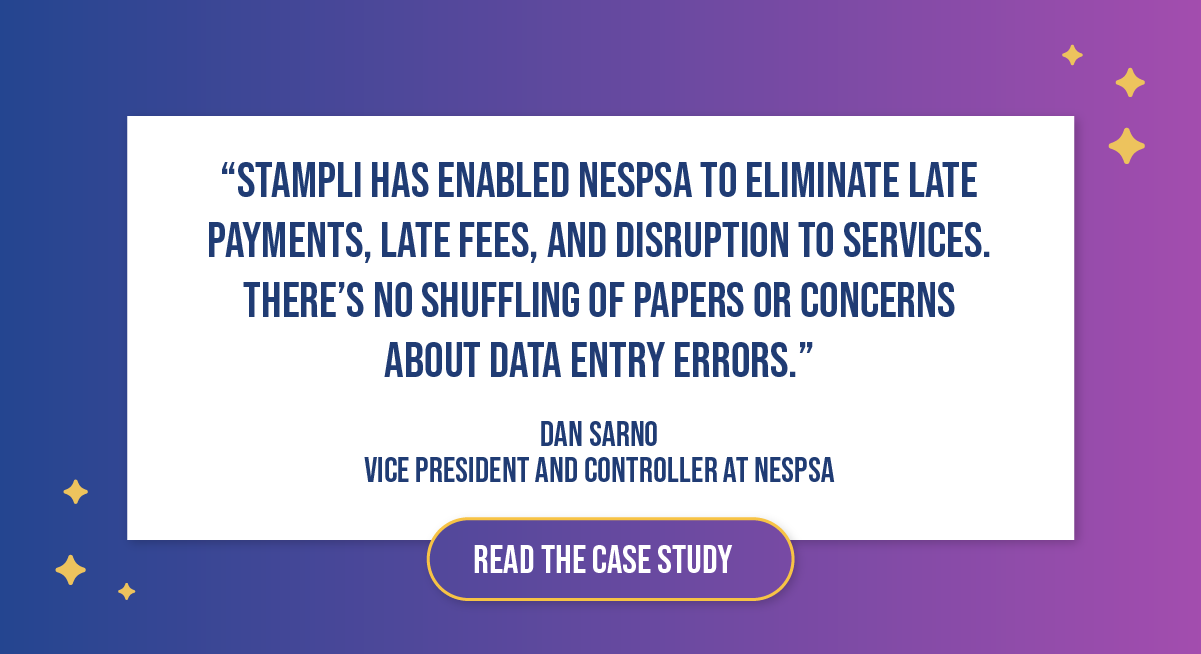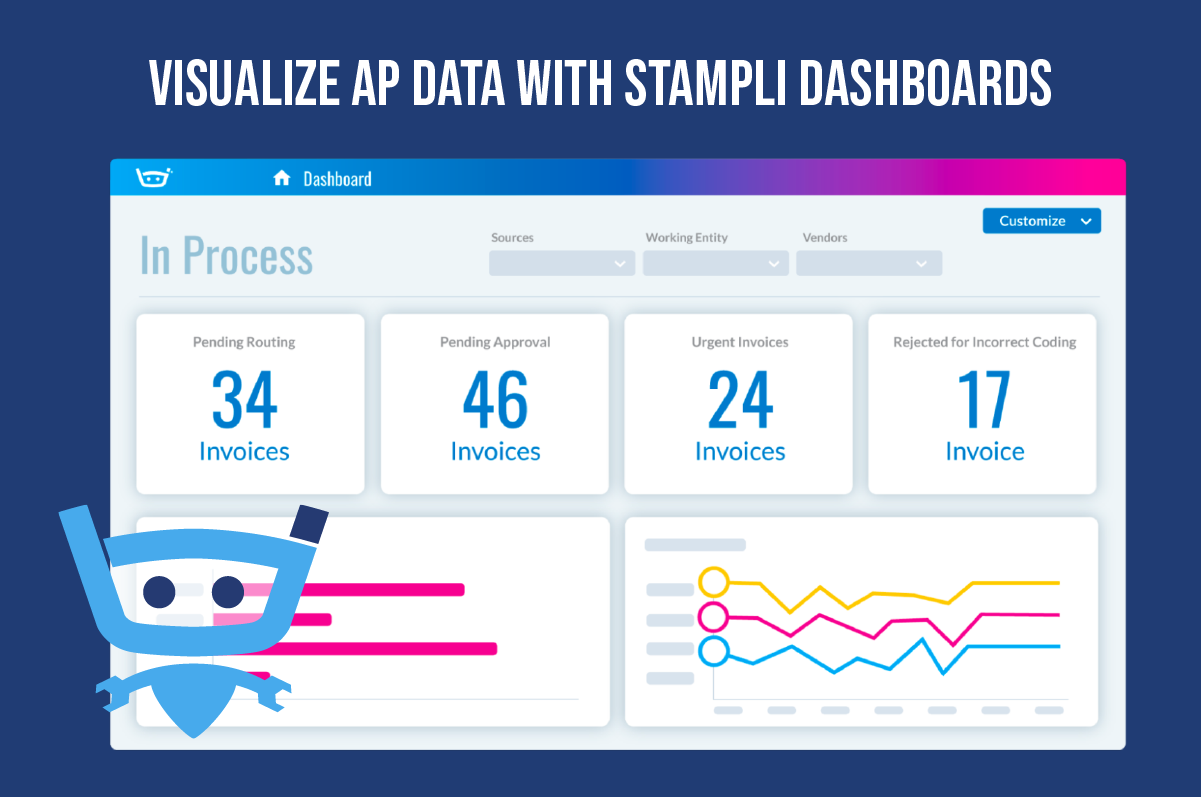Use AP reports to get strategic about accounts payable for SAP S/4HANA

As your business grows, so does the daily number of invoices you receive. Handling that volume takes a lot of work and planning, and it’s easy to lose track of key metrics if you’re not careful. You can use accounts payable reports to get a better grasp of things—not only to see how you’re performing today but also to help you plan for the future.
Businesses that use SAP S/4HANA may want to leverage the platform’s accounts payable reporting capabilities to monitor invoice processing and payment efficiency. However, running reports in SAP can be complicated, especially for AP teams.
In this article, we’ll examine SAP AP reports and their functions. We’ll also explore why third-party SAP integrations are a better alternative to SAP for accounts payable automation and reporting.
What are accounts payable (AP) reports?
Accounts payable reports provide insights into outstanding balances and liabilities, upcoming payment due dates, and recent payment history. If the reports are based on good data, they give a clear picture of cash outflows and liabilities and help financial managers prioritize workloads, stay on top of bill payments, and get control of cash flow.
AP reports also give insight into workflows to identify bottlenecks, error sources, and possible signs of fraud. For example, reports can identify duplicate or erroneous vendor invoices and track spending by department or office location to provide granular information on your AP processes.
Key benefits of AP reporting
AP reports give you insight into AP department performance by letting you monitor cash flows and invoice and payment processing metrics. Greater visibility lets you keep an eye on workloads and helps you anticipate your cash flow levels and plan for upcoming expenditures. Here are some of the other key benefits to your business:
Analyzing spending and cash flow
Reports let you analyze your spending by location, category, department, or project, providing deep knowledge about your business. Armed with this information, you can drill down into specific areas to ensure you’re spending money efficiently. You can also use this information to anticipate future spending and ensure optimal cash flow.

Identifying trends
AP reports help you identify trends that can reveal important insights about your business. For example, if you notice that your spending with a particular vendor is growing rapidly, you can investigate the increase and potentially approach the vendor for a volume discount.
Detecting anomalies
Similarly, reports also help you detect and respond to anomalies. For example, if you see a series of unusually large payments to a vendor, you can check the invoices and purchase orders to see if the payments are in error or evidence of fraud.
Optimizing payment terms
Reports let you see important metrics, like days payable outstanding (DPO), that give insights into your payment processing. You can use this information to optimize your payment methods and processes and negotiate favorable terms with suppliers. For example, you may move to Net 60 payment terms if you consistently exceed 30 days to pay your vendors.
Improving vendor relationships
Understanding your payment performance and AP processes helps you be more open and transparent with your vendors. It helps you identify your top vendors by spend amount. This information improves your ability to communicate with your vendors and agree on good business terms.
Types of AP reports in SAP S/4HANA
SAP has reporting capabilities within SAP Financial Accounting (SAP FI) and the accounts payable submodule. It can provide insights into many aspects of your AP workflows, transactions, and chart of accounts. Here are five key SAP standard reports you can use:
Accounts Payable Overview
The Accounts Payable Overview app lets you see important accounts payable KPIs on a single dashboard. You can use it to check current data like invoice status (blocked/parked/posted), Days Payable Outstanding (DPO), Payable Aging, Invoices Free for Payment, Invoices Blocked in Vendor Master Data, Suppliers with Debit Balances, credit memos, and more. The Accounts Payable Overview also lets you access the relevant accounts payable apps to drill down into the reports for more detail.
Aging Analysis
The AP Aging Analysis app lets you see the aging information of open items and payables in a vendor’s account. You can use it to identify negative payable trends and manage your cash flow more closely. For example, you can look at a specific vendor’s aging to see how long each invoice has been outstanding and the due dates for future invoices and then schedule outgoing payments accordingly. You should run aging reports regularly (weekly or monthly) to stay on top of your overdue invoices.

Invoice Processing Analysis
SAP’s Invoice Processing Analysis app gives you detailed info on your AP workflows and performance. You can view the total number of posted invoices and line items broken down by month, supplier, or AP team member. The app can also tell you the total of posted invoices and line items by processing status:
- Free for Payment (open line items with no payment block)
- Cleared (cleared line items)
- Blocked (open line items with payment block)
- Parked (parked line items)
With this level of detail, you can focus on the processing issues that may be causing delayed payments to suppliers. This is a great help when you’re trying to optimize your invoice processing workflows and automatic payments.
Display Supplier Balances
You can use the Display Supplier Balances app to check your vendor balances. The app reports debits, credits, and balances by company code, fiscal year, and supplier. You can also display reports on all related line items and compare supplier balances between two fiscal years. This app lets you stay on top of your vendor accounts to ensure everything is current. It also helps you understand if your annual spending with a vendor is increasing and in what areas.
Account Reconciliation Report
When you perform AP account reconciliations with SAP, you can review all the accounting activity related to issued payment vouchers for debts for a given time period. You can verify open or outstanding liability accounts against the GL accounts to ensure you’re making the right payments to the right vendors and not carrying any outstanding liability accounts. Any discrepancies between the reconciliation report and the general ledger can indicate human error, fraud, or incorrect vendor payments.
The bottom line: Simplicity and user-friendliness matters for AP reporting
To take the best advantage of AP reports, you need a simple and easier-to-use accounts payable solution that doesn’t tie your accounts payable processes to a single platform. The ideal solution is an independent third-party AP automation platform that integrates seamlessly with SAP to share data and produce accurate, real-time AP reporting.
Enterprises use SAP for its power and flexibility to automate processes and manage business data. However, these advantages come with added complexity — as you’ll see, SAP is hardly a user-friendly or simple reporting solution for most AP departments.
Like many complex ERPs, SAP segregates related functions into separate sections, complicating navigation and usability. SAP customers complain that this complexity can hinder its utility. For example, one G2 reviewer said, “The complexity & the layerness of the system makes it difficult for organizations to switch and decision-making proves difficult at the top level.”
In contrast, customers love how Stampli’s ease of navigation makes reporting easier. “The most I like about Stampli is it is so user friendly,” says one Stampli user. “I also love the many options to search by and then be able to download into a spreadsheet and even upload those invoices you searched by criteria. This feature makes it easy for reporting.”
Other users complain about the requirement to use SAP’s complex shortcode (tcode) system, saying they didn’t like “the level of complexity with [SAP] codes when you are new to the software and trying to learn new features,” adding they received “little to no support in getting advice” on how to resolve their issues.
Stampli offers an intuitive, single-screen user interface that removes the need to open multiple tabs across menu sections and gives full visibility into your AP data. Your AP team can access powerful reporting tools – built into the most powerful accounts payable solution – to understand invoice processes, employee workloads, invoice status, and more. Stampli Insights works right out of the box without coding or IT support, and it provides key metrics and KPIs in a clear and accessible visual dashboard.
“Thanks to Stampli, we have been able to process invoices efficiently while significantly reducing the need for manual data entry,” reports a Stampli customer, “The tracking of approvals has become more transparent, and we have access to reports that enable us to clarify all account details with a high degree of accuracy.”
In SAP, finance departments have to create tailored views within the ERP system so AP teams can access reports and analytics. “At times the software can feel clunky, specifically when making and saving changes within the platform within orders and when running reports,” said SAP S/4HANA customer, continuing, “Sometimes the system is slow to load data, and often times needs to be refreshed to display changes 4-5 times.”
Stampli lets users “pull reports and run audits with ease,” say customers. It’s AP reporting and analytical features “make a great resource to share with GMs that can quickly review what vendors or invoices that may be causing holds.” Stampli Dashboards is “yet another powerful feature that enables us to manage and track invoices with ease, providing instant visibility into the status of account,” according to customers.
Strategic accounts payable reporting with Stampli Insights
Stampli, the smartest and fastest accounts payable solution, provides enormous flexibility and scalability for your business, and it integrates seamlessly with SAP S/4HANA without changing your IT infrastructure or AP processes.
Stampli provides a single, filterable view for all invoices and expense times, and centralizes communication on top of the invoice so AP teams have everything they need at their fingertips.
Armed with Stampli Insights, Stampli’s AP reporting and analytics solution, Stampli gives you access to real-time data through AP reports and dashboards so you can make informed strategic decisions.

Here’s how Stampli Insights can help you turn AP into a strategic driver:
- Gain holistic insights into your AP data with pre-built dashboards and interactive widgets.
- Easily measure the most important AP data at a glance or use filters to drill down deeper.
- Customize your dashboards to view the exact AP data you currently need with an intuitive interface.
- Generate built-in AP reports with detailed invoice information without any hassle.
- Customize and save your reports for easy access when you need them next.
- Export or share reports in CSV, XLSX, PDF formats, or print them out for your convenience.
“Stampli has provided structure, ease, & teamwork since day 1!”
Customers are making the switch from confusing workflows and information silos in SAP to simplicity and flexibility with Stampli.
Stampli is the leading AP automation solution and #1 for customer service. “Before using Stampli, the invoice management process in place lacked collaboration between all parties involved in reviewing and approving just 1 invoice,” says another happy Stampli customer. ”In my company, we have tens of invoices that come through a day, so it is extremely important to have a system in place that works for all levels from field staff all the way up to CFO. Stampli has provided structure, ease & teamwork since day 1!”
Discover how Stampli can streamline your AP processes and help your business save time and money. Contact us today to learn more about the strategic benefits of instant insights into your AP data.




